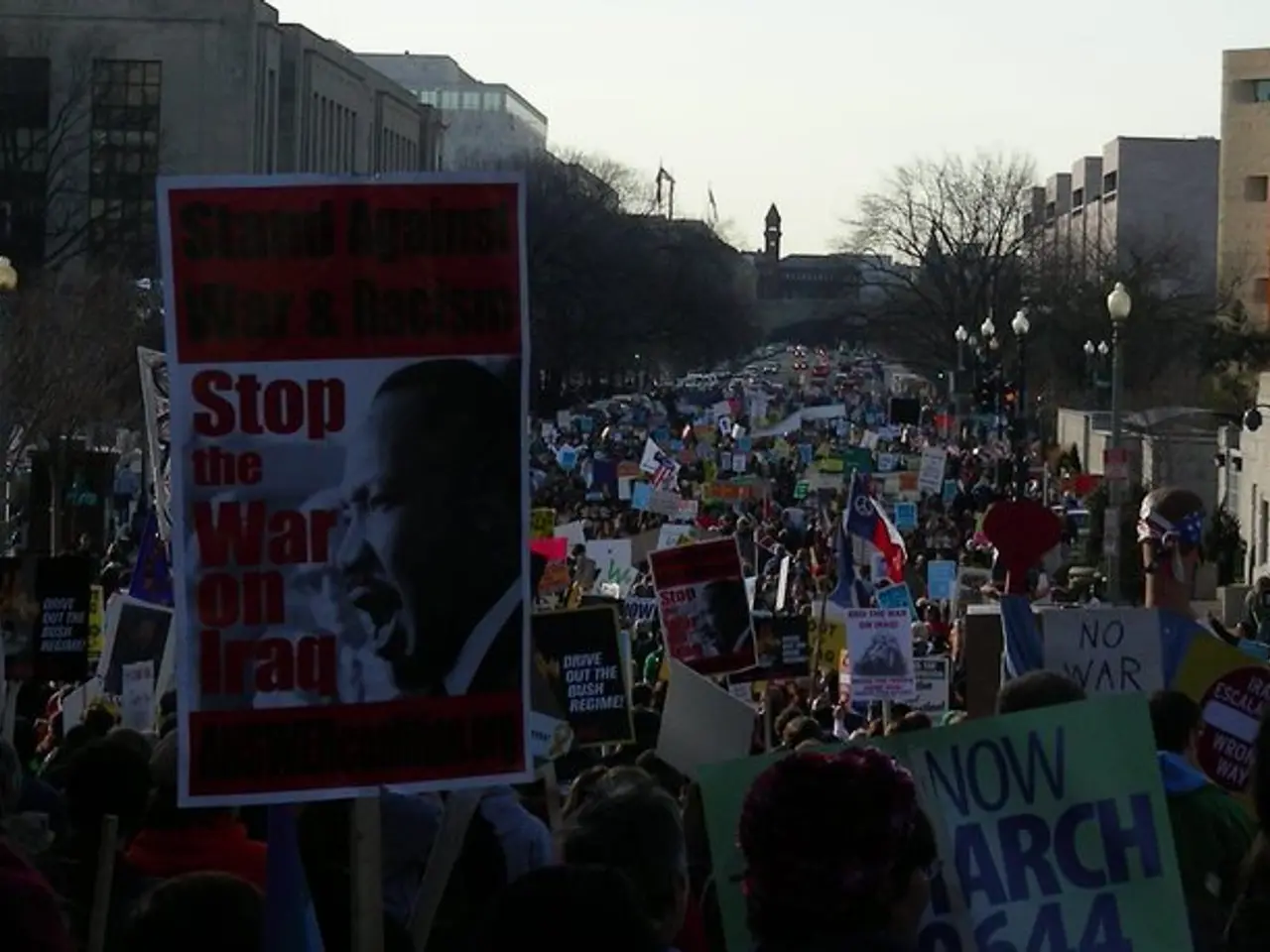Trump authorities release Executive Order aimed at boosting data center construction efficiency
In a bid to boost the development of Artificial Intelligence (AI) infrastructure in the United States, President Trump issued two Executive Orders (EO) in 2025. The first, titled "Unleashing American Energy," was issued in February, with the intention of streamlining the National Environmental Policy Act (NEPA) processes for infrastructure projects. The second, "Accelerating Federal Permitting of Data Center Infrastructure," was issued on July 23.
The July EO focuses on high-capacity AI data centers, those exceeding 100 megawatts of AI-dedicated load. This order mandates several specific changes to environmental regulations and permitting processes, aiming to expedite and streamline federal environmental reviews and permits, particularly for projects critical to AI and national security.
Key regulatory and permitting changes include:
- Establishment of New NEPA Categorical Exclusions: Agencies are directed to create new categorical exclusions under NEPA for routine data center-related construction, bypassing lengthy environmental impact assessments when projects meet certain criteria.
- Expedited Permitting Under the Clean Water Act (CWA): Permitting is expedited, especially under Section 404 of the CWA, which governs discharge of dredged or fill material into waters, to reduce delays normally associated with data center construction.
- Streamlining Clean Air Act (CAA) and CWA Regulations: The EO seeks to simplify regulatory compliance related to air and water quality permits for data centers and associated energy infrastructure, potentially reducing administrative burdens and accelerating project timelines.
- Utilization of Federally Owned Land and Resources: The Order encourages the use of federal land suitable for data center siting and mandates federal agencies to make such land available, facilitating expeditious and orderly development.
- Implementation of the Fixing America’s Surface Transportation Act (FAST-41) Process: This process is to be employed to track and expedite permitting timelines, improving coordination among federal agencies and ensuring deadlines are met.
- Financial Support and Incentives: The EO is complemented by financial measures such as loan guarantees and tax incentives to promote development.
- Focus on Projects with AI and National Security Relevance: The EO prioritizes high-capacity projects critical to AI training, inference, and simulation, aiming to ensure that permitting processes do not delay technological competitiveness.
While these federal-level reforms aim to significantly reduce permitting timelines, state and local permitting regimes may still impose additional requirements and reviews. Companies developing data centers, energy or manufacturing facilities, utilities, and AI infrastructure providers could potentially benefit from expedited permitting, reduced regulatory requirements, and federal financial support.
Industry stakeholders may wish to engage with regulators on the changes to the relevant regulations to facilitate more clear, predictable, and advantageous regulatory requirements. The Secretary of Commerce is directed to launch an initiative to provide financial support for Qualifying Projects, defined as data center projects or related infrastructure, energy or manufacturing projects that meet certain criteria, such as having a commitment of $500 million or more in capital expenditures.
Moreover, the AI Action Plan, which identifies over 90 policy actions that the Trump Administration will take over the coming months, prioritizes building American AI infrastructure. The Environmental Protection Agency (EPA) has also identified AI development as one of its five key priorities, with EPA Administrator Zeldin announcing this in February 2025.
The removal of NEPA implementing regulations was a part of the "Unleashing American Energy" EO, further demonstrating the administration's commitment to streamlining infrastructure development. However, implementing the EO may require changes to certain existing regulations, and the regulatory amendment process can be lengthy and subject to public comment periods, petitions for review, and litigation.
In summary, the EO reshapes environmental permitting by creating categorical exclusions under NEPA, expediting CWA wetland permits, streamlining Clean Air and Water Act processes, making federal land readily available, and using coordinated federal tracking under FAST-41, all targeted toward accelerating the approval and construction of large-scale AI data centers and their supporting infrastructure.
- The President's second Executive Order in 2025, titled "Accelerating Federal Permitting of Data Center Infrastructure," prioritizes high-capacity AI data centers.
- The July EO mandates changes to environmental regulations and permitting processes, aiming to expedite and streamline federal reviews.
- Agencies are directed to create new categorical exclusions under NEPA for routine data center-related construction.
- Permitting is expedited under Section 404 of the Clean Water Act, particularly for data center construction.
- The EO seeks to simplify regulatory compliance related to air and water quality permits for data centers and associated energy infrastructure.
- The Order encourages the use of federal land suitable for data center siting and mandates federal agencies to make such land available.
- The EO is complemented by financial measures such as loan guarantees and tax incentives to promote development.
- The EO prioritizes high-capacity projects critical to AI training, inference, and simulation.
- The Secretary of Commerce is directed to launch an initiative to provide financial support for Qualifying Projects.
- The EO's implementation may require changes to certain existing regulations, which can be lengthy and subject to public comment periods, petitions for review, and litigation.




